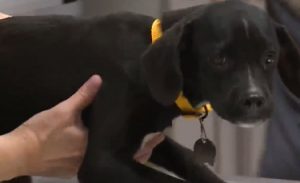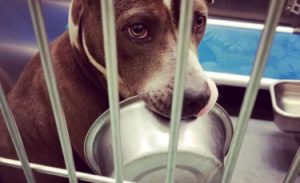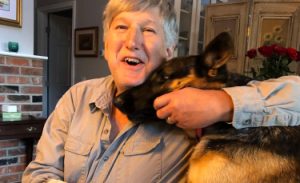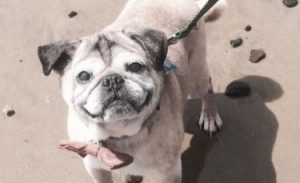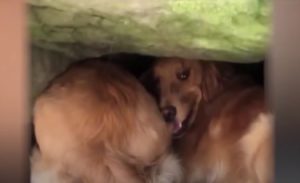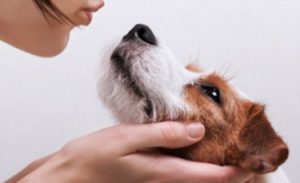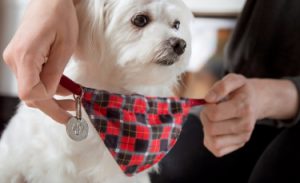Other names: South Russian Shepherd, Youjak, Caucasian
Rustic dog par excellence, the Russian Shepherd is still very little known in France. He is an indefatigable herd keeper, who scares all foreigners away with his robustness and his musculature. He imposes and plays on it. Thus, as a companion dog, it will be ideal for the protection of its master and its adoptive family. He is dominant and independent. He can be aggressive towards those he does not know. Moreover lively, it is not suitable for all families, especially the most novices in the field. Physically, the males are larger than the females.
<!–
–>

| Long | |
| Russia | |
| Giant | |
| Long |
| Sex | Weight | Cut |
|---|---|---|
| Female | From 43 kg to 45 kg | From 58 cm to 66 cm |
| Male | From 52 kg to 55 kg | From 60 cm to 72 cm |
History of the breed
The Russian Shepherd, also called Youjak , is originally a dog that protects flocks of sheep in Russia. He doesn’t hesitate to pit himself against wolves and bears. It was developed in the 19th century in the Crimea. It comes from a cross between an Asturian Shepherd and Sheepdogs such as the Tatar Shepherd or the Borzoi.
Then the breed went into decline during the Russian Revolution with the destruction of Askania Nova , a nature reserve in southern Ukraine. In 1923, a biologist by the name of A. Brauner would then strive to make the breed survive by settling in the region and setting up a breeding in Dzhankoi. His efforts are said to have contributed to a marked revival of interest in the Russian Shepherd. Unfortunately, World War II, in turn, precipitated a dramatic drop in the breed’s numbers. This was definitively recognized by the Fédération Cynologique Internationale (FCI) on September 30, 1983.
Russian Shepherd Pictures

See all Russian Shepherd photos from Woopets members
Physical features
His hair: long (10 to 15 cm) on the whole body, slightly wavy, thick and bushy. The outer coat is lined with an equally dense undercoat.
Its color: mainly white, but can also be white and yellow, grayish or any other shade of gray.
His head: rather elongated. The forehead is moderately broad, the stop not very pronounced, the nose large and black.
His ears: triangular in shape, small in relation to the body and hanging down.
His eyes: dark in color, oval in shape, arranged horizontally.
His body: the neck is lean, muscular and of moderate length, the withers visible without being high, the back straight and strong, the kidney wide and rounded, the chest flattened and deep, the belly slightly raised.
Its tail: covered with a long, coarse, thick and very thick hair.
Behavior and character
| Affectionate | |
|---|---|
| Calm | |
| Protective | |
| Independent | |
| Hunter | |
| Barks / howls |
Behavior with others
| Cohabitation with children | |
|---|---|
| Sociable with other animals | |
| Love strangers |
The Russian Shepherd is a very active dog , rather nervous and lively . Dominant and independent , he is also alert, suspicious and even biting towards strangers. He is, above all, a herd and territory guard dog . The Russian Shepherd is considered hardy, lively, and devilishly effective at scaring foreigners away . With these, he can be even aggressive and biting . He is alert and acts as a perfect watchdog .
Thus, he protects his family like a herd, not letting intruders come too close. With his master, he shows a whole different face. That of a considerate, gentle, kind dog, endowed with great sensitivity . He did not hesitate even to show pot of glue by now. He loves caresses, even those of children.
The Russian Shepherd
is it right for you? Take the test!
Education
| Clever | |
|---|---|
| Obedient |
The Russian Shepherd must be firmly educated from an early age. Otherwise, his naturally dominant and fairly stubborn behavior may gain the upper hand. His physical power and bite may also become difficult to control.
Its potency must therefore be controlled early. However, no question of educating him by violence, on the contrary. His master will have to show patience and gentleness to achieve his ends. It is also preferable to socialize him to reduce his distrust of strangers.
Living conditions
| Suitable for apartment living | |
|---|---|
| Good for new masters | |
| Love it hot | |
| Love the cold |
The Russian Shepherd is definitely not an apartment dog . Its large size, character, as well as its need for activity and space make it more suitable for living in a house with a large fenced garden . It is aimed at people with enough experience to be able to manage its personality and enough available to take it out several times a day .
Health
| Solid | |
|---|---|
| Ease of gaining weight |
The Russian Shepherd is an extremely robust and resistant dog except for ear infections , due to his floppy ears. Its solid constitution and remarkably thick double coat allow it to withstand particularly difficult climatic conditions . The breed does not exhibit any predisposition to any disease , although its large size may put the risk of hip dysplasia at risk.
Hypoallergenic breed
No
Litter size
NC
To protect yourself from these risks and insure your companion in the event of health problems, Woopets recommends a Russian Shepherd dog insurance .

function showAssuranceForm () {var siteReferer = var id_race_association = ”; //console.log(id_race_association);success: function (html) {}});}document.addEventListener (‘DOMContentLoaded’, () => {$ (‘# assuranceModalBanner’). on (‘show.bs.modal’, function (event) {showAssuranceForm ();});});
Life expectancy
Minimum: 10 years
Maximum: 12 years
The life expectancy of a Russian Shepherd is, on average, between 10 years and 12 years.
Calculate the human age of your Russian Shepherd!
To choose… 1 year 2 years 3 years Four years 5 years 6 years 7 years 8 years 9 years 10 years 11 years old 12 years 13 years 14 years old 15 years old 16 years old 17 years 18 years old 19 years old 20 years 21 years old
Maintenance and hygiene
| Ease of maintenance | |
|---|---|
| Cost of maintenance | |
| Hair loss |
| Drool level | |
|---|---|
| Ease of grooming |
During its moult, the Russian Shepherd can lose large amounts of hair . Outside of this period, its maintenance is rather minimal, but it must be carried out regularly to avoid the inconvenience associated with its bushy dress (accumulation of dirt).
It is recommended to brush the dog once a week outside of the moulting period. During the latter, brushing becomes daily to rid its fur of the many dead hairs. For the rest, you must make sure to clean your ears from time to time to avoid any infection leading to an ear infection.
Price and budget
Purchase price
Mini
Max € 500
1000 €
The purchase price of a Russian Shepherd is between 500 € and 1000 €.
Annual maintenance cost
Mini
€ 1,750 Maxi
€ 1900
The annual maintenance cost of a Russian Shepherd is between € 1,750 and € 1,900.
No name is currently proposed. Use our tool to find the name of your Russian Shepherd!
Food
The Russian Shepherd must swallow around 700 grams of high quality kibble per day. Robust and physical dog, its diet must be rich and balanced to avoid any possible deficiency.
Want the best for your dog?
Create the tailor-made diet for your Russian Shepherd
I discover !
PROMO -30% | Delivered to you!

Physical activity
| Athletic | |
|---|---|
| Energy level | |
| Potential to play |
The Russian Shepherd needs a lot of exercise to exercise and stay balanced. This is not the kind of dog who can be satisfied with a simple daily outing: he needs at least 2 long walks a day .
Others
| Master character <span class="btnTooltip qTip2" title="- Calm: the master must be gentle and know how to show patience. – Active: the owner must be energetic and dynamic to live in harmony with his dog. – Hyperactive: the owner must be stimulating and very restless to suit the temperament of his dog.”> |
Calm |
|---|
We talk on the forum
CIRCUS in …… Russia
Message from Joo
Shetland Shepherd or Australian Shepherd
Guest message
Australian Shepherd, “SHEPHERD” / genetic problem
Message from Cindy & Oreo
Weight and measurements: Malinois Shepherd and Dutch Shepherd
Message from Fouad Bouregba
The white shepherd, a sensitive dog?
Message from alison
Do you have a question about the Russian Shepherd?
Do not hesitate to ask Woopets visitors for advice on the forum!


